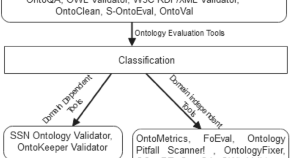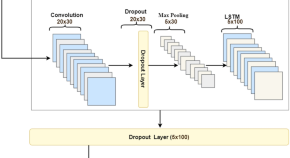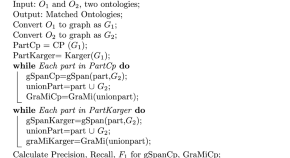Collection
The Way Forward with AI-complete Problems
- Submission status
- Closed
Intelligent agents are “Intelligent” pieces of software that can work autonomously, seek necessary/present/relevant/authentic information, coordinate with each other, understand the contents, and take necessary actions to make life simple for human beings. There are three information aspects for an intelligent agent: syntax (sentence construction, grammatical correctness), semantics (human-level interaction), and pragmatics (intention behind the communication. An intelligent agent is required to fuse heterogeneous sources of information together for which it should be equipped with both the data-driven (statistical) and knowledge-driven (symbolic) AI disciplines. We need a representation of our data that not only includes the data itself but where the interactions in it is a first-class citizen.
We have seen in the past decade that statistical models have revolutionized the world. Though the Statistical models have already proved themselves, they are not a Universal Solvent but only a tool as others. Deep learning is very good at learning in a static world and executing low-level patterns, provided it is fed with a lot of data. More deep, more intelligent, and of course more black. This is the crux of the problem that this special issue will emphasize. The question is “Is the AI of today Artificial Super Intelligence (ASI) / Artificial General Intelligence (AGI) / Artificial Narrow Intelligence (ANI)? Is the AI of today the AI that we are craving for?” In fact, today’s artificial intelligence is weak AI. There are a number of instances where DL has produced delusional and unrealistic results. Accuracy alone is not sufficient. We require exploring ways of opening the black box of statistical models. When DL researchers are asked to open the black box, this today implies less intelligent models to them (limited capability). In addition to increased performance, AGI aims to build trust.
Symbolic AI and statistical AI have to go together to achieve contextual computing. The symbolist approach is nowadays manifested as a knowledge graph that advanced statistics and machine learning can run on top of. The Hybrid Model combines machine intelligence with human intelligence to reach conclusions faster than possible by humans alone along with the explanations needed for trust in the decisions and results; while requiring far fewer data samples for training and conversing in natural language. The Hybrid Model is able to generalize and is excellent at perceiving, learning, and reasoning with minimal supervision. In addition, semantics have come a long way in enhancing explainability in AI systems.
Editors
-
Sven Groppe
Professor, University of Lübeck, Germany Area Editor of New Generation Computing
-
Sarika Jain
Professor National Institute of Technology, Kurukshetra, Haryana, India Guest Editor
Articles (10 in this collection)
-
-
The Way Forward with AI-Complete Problems
Authors
- Sven Groppe
- Sarika Jain
- Content type: Editorial
- Published: 19 March 2024
- Pages: 1 - 5
-
IRI_Debug: An Ontology Evaluation Tool
Authors (first, second and last of 4)
- Vishal Lama
- Archana Patel
- Sarika Jain
- Content type: OriginalPaper
- Published: 12 March 2024
- Pages: 177 - 197

-
Deep Convolutional Neural Network for Knowledge-Infused Text Classification
Authors
- Sonika Malik
- Sarika Jain
- Content type: OriginalPaper
- Published: 09 March 2024
- Pages: 157 - 176

-
Convolution Neural Network Having Multiple Channels with Own Attention Layer for Depression Detection from Social Data
Authors
- Sumit Dalal
- Sarika Jain
- Mayank Dave
- Content type: OriginalPaper
- Published: 01 November 2023
- Pages: 135 - 155

-
An Approach for Analyzing Unstructured Text Data Using Topic Modeling Techniques for Efficient Information Extraction
Authors
- Ashwini Zadgaonkar
- Avinash J. Agrawal
- Content type: OriginalPaper
- Published: 27 August 2023
- Pages: 109 - 134

-
A CNN-LSTM-Based Hybrid Deep Learning Approach for Sentiment Analysis on Monkeypox Tweets
Authors (first, second and last of 4)
- Krishna Kumar Mohbey
- Gaurav Meena
- K. Lokesh
- Content type: OriginalPaper
- Published: 14 August 2023
- Pages: 89 - 107

-
Explainable AI: To Reveal the Logic of Black-Box Models
Authors
- Chinu
- Urvashi Bansal
- Content type: OriginalPaper
- Published: 01 February 2023
- Pages: 53 - 87

-
A Graph-Based Ontology Matching Framework
Authors
- Fatmana Şentürk
- Vecdi Aytac
- Content type: OriginalPaper
- Published: 06 January 2023
- Pages: 33 - 51

-
Improved Prediction Analysis with Hybrid Models for Thunderstorm Classification over the Ranchi Region
Authors (first, second and last of 4)
- Kanchan Bala
- Sanchita Paul
- Satyasundara Mahapatra
- Content type: OriginalPaper
- Published: 06 June 2022
- Pages: 7 - 31



